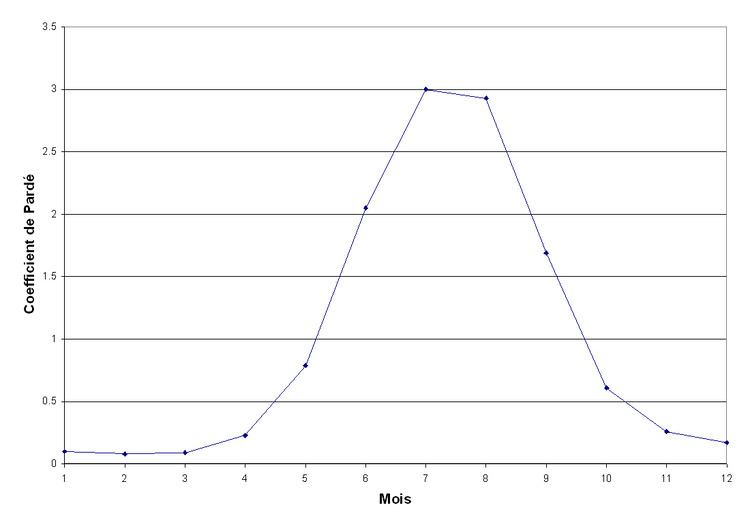River regime can describe one of two characteristics of a reach of an alluvial river:
The variability in its discharge throughout the course of a year in response to precipitation, temperature, evapotranspiration, and drainage basin characteristics (Beckinsale, 1969)A series of characteristic power-law relationships between discharge and width, depth, and slopeThe latter is described by the fact that the discharge through a river of an approximate rectangular cross-section must, through conservation of mass, equal
Q = u ¯ b h where Q is the volumetric discharge, u ¯ is the mean flow velocity, b is the channel width (breadth) and h is the channel depth.
Because of this relationship, as discharge increases, depth, width, and/or mean velocity must increase as well.
Empirically-derived relationships between depth, slope, and velocity are:
b ∝ Q 0.5 h ∝ Q 0.4 u ∝ Q 0.1 Q refers to a "dominant discharge" or "channel-forming discharge", which is typically the 1–2 year flood, though there is a large amount of scatter around this mean. This is the event that causes significant erosion and deposition and determines the channel morphology.
The variability in discharge over the course of a year is commonly represented by a hydrograph with mean monthly discharge variations plotted over the annual time scale. When interpreting such records of discharge, it is important to factor in the time scale over which the average monthly values were calculated. It is particularly difficult to establish a typical annual river regime for rivers with high interannual variability in monthly discharge and/or significant changes in the catchment's characteristics (e.g. tectonic influences or the introduction of water management practices).
There are three basic types of regimes (Pardé, 1955):
simple regime - one maximum and one minimum per yearmixed regime - two maximums and two minimums per yearcomplex mode - several extremaSimple regimes can be nival, pluvial or glacial, depending on the origin of the water.
Glacial regimeThe glacial regime is characterised by:
Very high discharge in summer after the ice meltVery low discharge from the end of autumn to early springAmplitude of monthly variation of discharge greater than 25Very high daily variability in discharge during the yearHigh flow (several hundred l/s/km2)It is found at high altitudes, above 2,500 metres (8,200 ft). Example: Rhône at Brigue.
NivalThe nival regime is similar to the glacial, but attenuated and the maximum takes place earlier, in June. It can be mountain or plain nival. The characteristics of the plain nival (example: Simme at Oberwi) are:
Short and violent flood in April–May following massive spring thawing ofwinter snowsGreat daily variabilityVery great variability over the course of the yearGreat inter-annual variabilitySignificant flowPluvialThe pluvial regime is characterized by:
high water in winter and springlow discharge in summergreat inter-annual variabilityflow is generally rather weakIt is typical of rivers at low to moderate altitude (500 to 1,000 metres or 1,600 to 3,300 feet). Example: Seine.
Tropical pluvialThe tropical pluvial regime is characterized by:
very low discharge in the cold season and abundant rainfall in the warm seasonminimum can reach very low valuesgreat variability of discharge during the yearRelatively regular from one year to anotherNivo-glacialonly one true maximum, which occurs in the late spring or the early summer (from May to July in the case of the Northern hemisphere)relatively high diurnal variations during the hot seasonsignificant yearly variation, but less than in the snow regimesignificant flowNivo-pluvialtwo maximums, the first occurring in the spring and the other in autumna main low-water in October and a secondary low-water in Januarysignificant inter-annual variationsExample: Issole
Pluvio-nivala period of rainfall in late autumn due to abundant rainfall, followed by a light increase due to snow melt in early springthe single minimum occurs in autumnlow amplitudeExample: Mississippi.
The complex regime is characteristic of large rivers, the flow of which is diverly influenced by numerous tributaries from different altitudes, climates etc. The influences diminish extreme discharges and increase the regularity of the mean monthly discharge from upstream to downstream.

